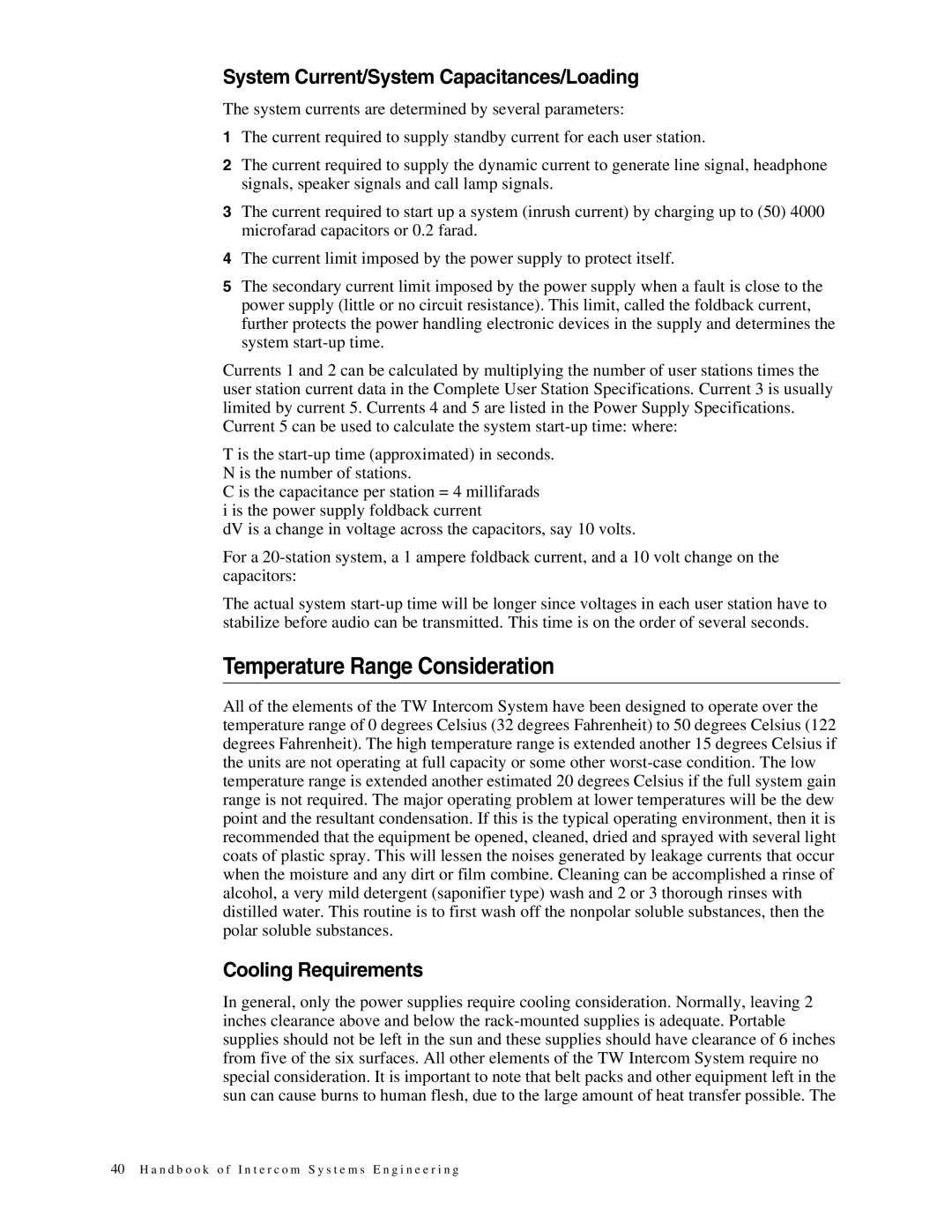System Current/System Capacitances/Loading
The system currents are determined by several parameters:
1The current required to supply standby current for each user station.
2The current required to supply the dynamic current to generate line signal, headphone signals, speaker signals and call lamp signals.
3The current required to start up a system (inrush current) by charging up to (50) 4000 microfarad capacitors or 0.2 farad.
4The current limit imposed by the power supply to protect itself.
5The secondary current limit imposed by the power supply when a fault is close to the power supply (little or no circuit resistance). This limit, called the foldback current, further protects the power handling electronic devices in the supply and determines the system
Currents 1 and 2 can be calculated by multiplying the number of user stations times the user station current data in the Complete User Station Specifications. Current 3 is usually limited by current 5. Currents 4 and 5 are listed in the Power Supply Specifications. Current 5 can be used to calculate the system
T is the
C is the capacitance per station = 4 millifarads i is the power supply foldback current
dV is a change in voltage across the capacitors, say 10 volts.
For a
The actual system
Temperature Range Consideration
All of the elements of the TW Intercom System have been designed to operate over the temperature range of 0 degrees Celsius (32 degrees Fahrenheit) to 50 degrees Celsius (122 degrees Fahrenheit). The high temperature range is extended another 15 degrees Celsius if the units are not operating at full capacity or some other
Cooling Requirements
In general, only the power supplies require cooling consideration. Normally, leaving 2 inches clearance above and below the
40 H a n d b o o k o f I n t e r c o m S y s t e m s E n g i n e e r i n g
